Drawing Aerial Perspectives with SketchUp

By Jim Leggitt
Jim Leggitt FAIA, is an architect, urban planner, and professional illustrator. He has been practicing for over thirty-five years in Denver, Colorado. Jim has conducted drawing seminars and workshops at AIA National Conventions, AIA regional and local conferences, universities, architectural firms and for allied design professionals throughout the country and Canada for over ten years. Jim has presented at the Google SketchUp 3D Base-camps 2005 and 2008. He is also an adjunct professor at the University of Colorado Denver College of Architecture and Planning and offers drawing workshops through the college’s Continuing and Professional Education program. His newly published book Drawing Shortcuts has already been adopted by Ball State University, Indiana.

A quick and easy way to draw an aerial perspective from a site plan is to construct a simple SketchUp massing model, establish an aerial view and then trace the perspective from a print of the scene. Here is a “step-by-step” explanation from a recent drawing I created during a drawing workshop with landscape architects at the University of Monterrey in Mexico.
Step 1. Import Site Plan into SketchUp.
I selected a beautifully illustrated concept design for a village center (courtesy of www.consiliumdesign.com) and imported the jpeg image into a new SketchUp model and resized the image to scale.
Step 2. Trace Edges and Building Massing.
Using the “x-ray” face style, I traced all of the primary curb lines, plaza geometry and building outlines. I push-pulled the building masses to approximately 30 feet high, breaking the faces in half to represent a 2-story building. The shapes of the buildings are purposely left as simple shapes without any detail, windows or articulation. I established the exact aerial view and saved it. I used a camera focal length of 65mm to avoid severe distortion of the 3-point perspective and then exported a jpeg of the “x-ray” view.
Step 3. Exported Shaded View.
Using the same aerial scene, I changed the face style to “shaded” and exported a second view with the shadows carefully adjusted to highlight the building massing.
Step 4. Scene Composite.
The “x-ray” and “shaded” views were merged together in Photoshop to create a composite image that showed the opaque buildings in addition to the transparent site plan. This was necessary to clearly view the tree placement, pavement patterns and overall site design. I printed the composite view in color on 11”x17” paper.
Step 5. Aerial Drawing Dual Scan.
With a red pencil on trace, I illustrated the trees, buildings, lighting, water features and steps in 3-dimensions (red pencil drawing not shown). I then traced the final ink line drawing on a second sheet of trace paper with a fine point Pilot Fineliner pen. Color was added with Chartpak AD markers and the hand drawing was scanned together with the color print. The resulting image highlights the plaza design while “ghosting” in the other site buildings and parking. I call this image a “composite scan” that merges a hand drawing and the digital model view together into a very effective tradigital hybrid.
Optional Step. Hand Drawing without Context. An alternative to merging the hand drawn aerial perspective with the digital model view is to scan the drawing without the background and present it as a 100% hand drawing. Looking at the image alone, I would recommend some additional linework to show the paving patterns in the plaza – 5 minutes of light pencil work would suffice!
To learn more about Drawing with SketchUp, pick up Jim’s book Drawing Shortcuts Second Edition or visit www.drawingshortcuts.com.

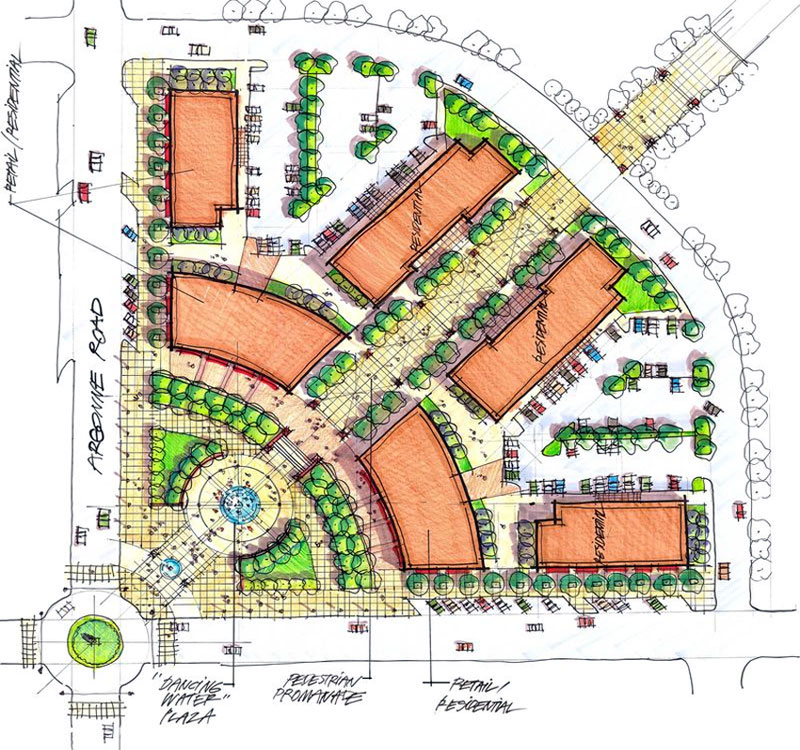
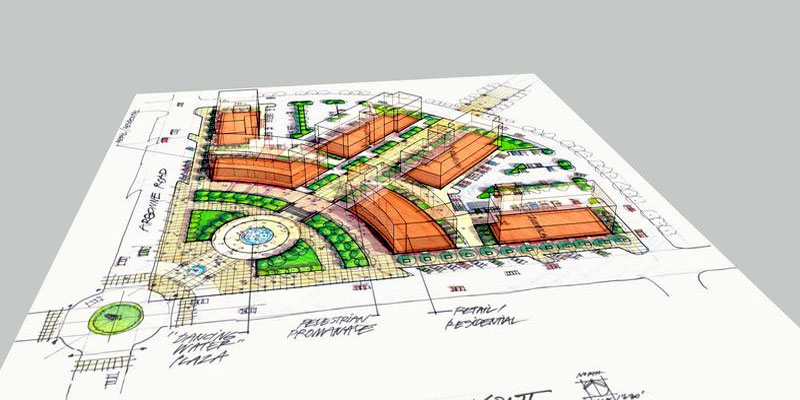
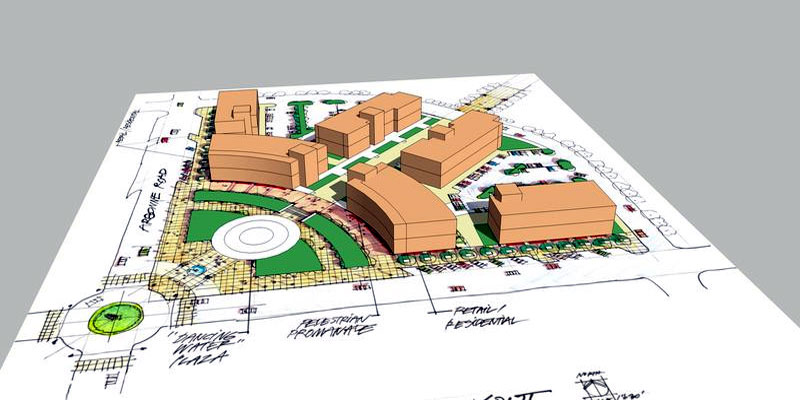

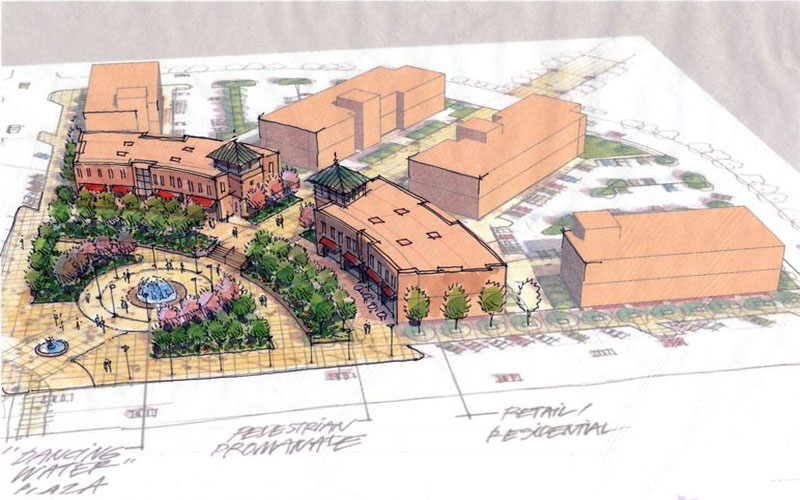
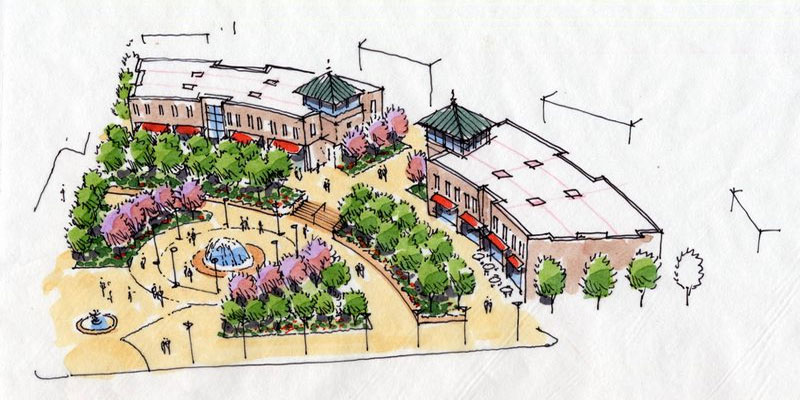








Interesitng, I was taught that this is known as aerial landscape, not aerial perspective. Aerial perspective is the same thing as atmospheric perspective and relates to how distant objects grow more faded and less distinct.
Thank you for this, this helps alot.
All I can say is “WOW” ..this helped me a lot..Being a grade seven student, drawing is so much fun.When I came to know about Aerial perspective, gosh ‘visual art’.. And this site just helped me a lot..
Thank you so so much..
Thankyou so much😊💯